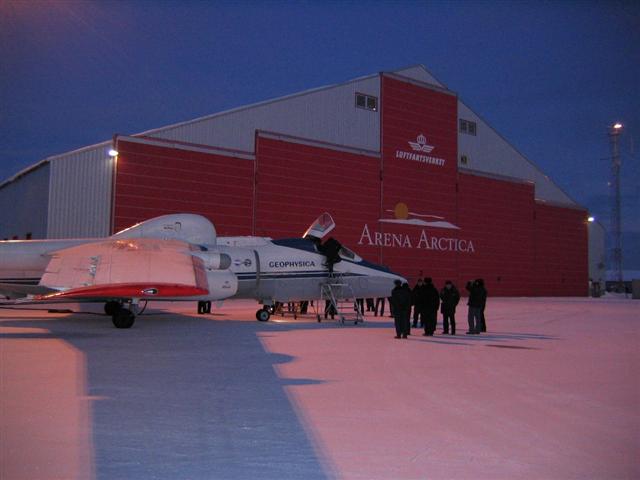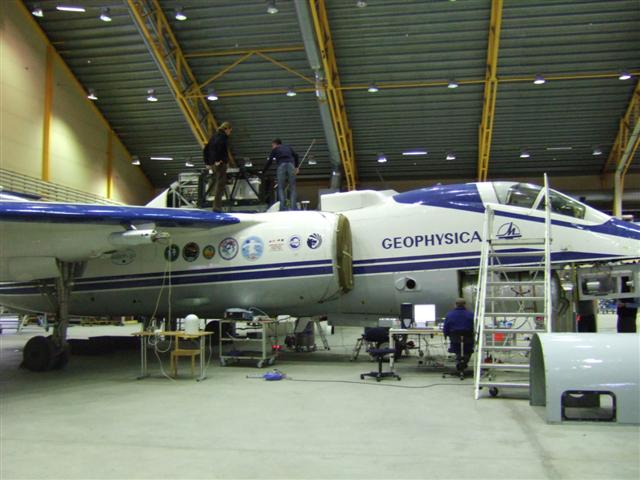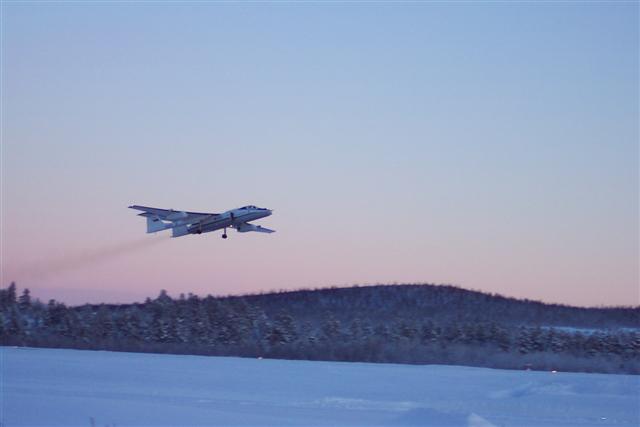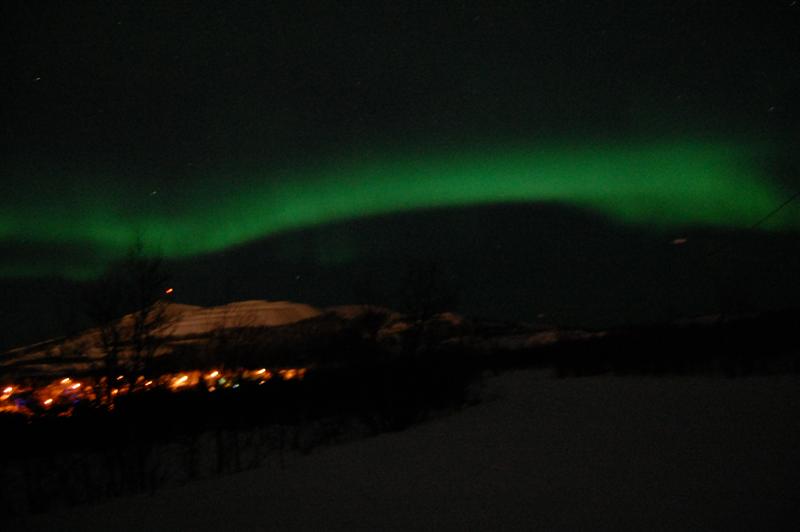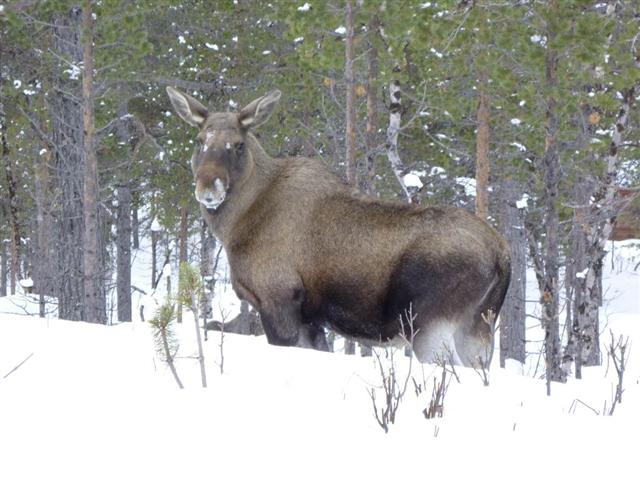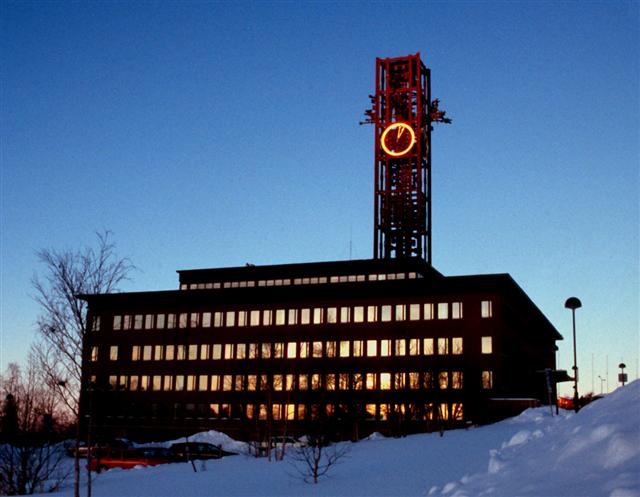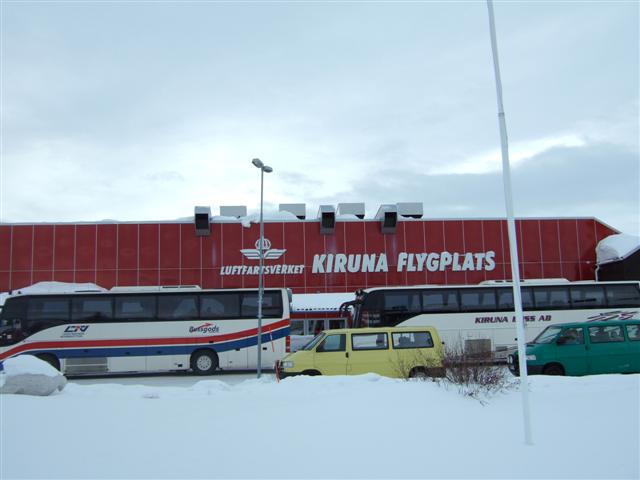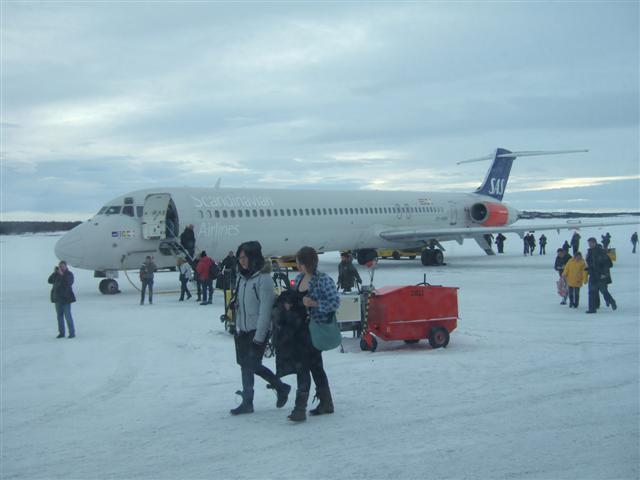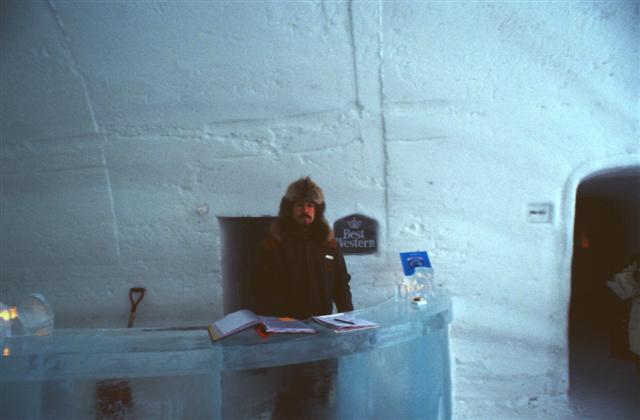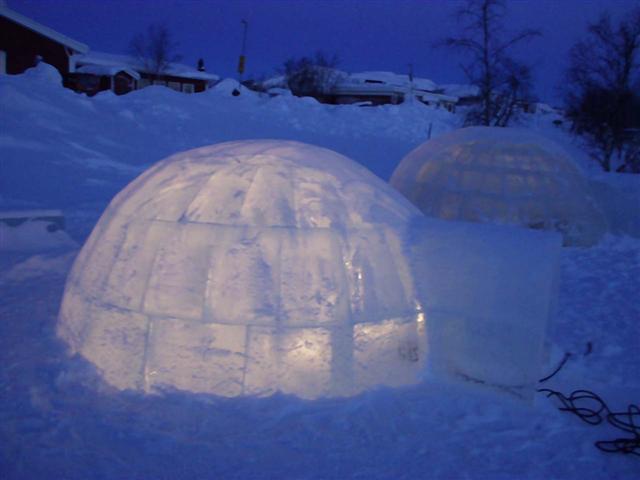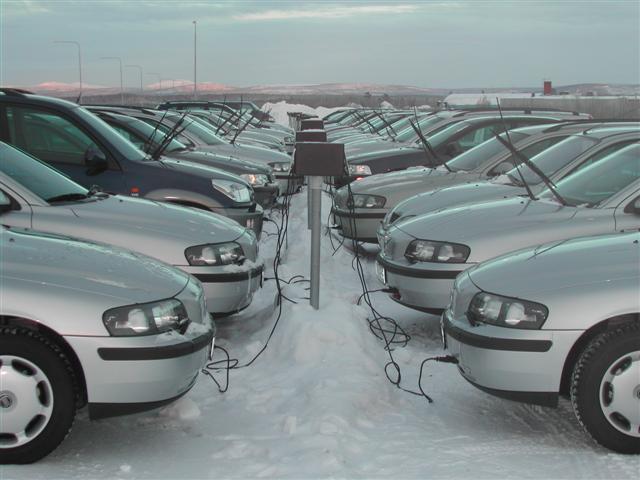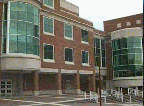
| Home |
| Research |
| Group Members |
| Publications |
| Classes Taught |
| Prospective Students |
| Directions to CSS Bldg |
| Campus Map |
Kiruna 2010
The Arena Arctica in Kiruna, Sweden is a state-of-the-art facility above the Arctic Circle consisting of hangar space for research aircraft as well as offices and laboratory space.
Arena Arctica. Photo credit: Forschungszentrum Jülich
This facility has housed numerous atmospheric chemistry field experiments focused on the composition of the Arctic, including the joint NASA/European SOLVE-THESEO experiment in 2000 and the NASA SOLVE-II and European Vintersol campaigns in 2003.
During winter 2010, the EU RECONCILE experiment has deployed from Arena Arctica. The goals of this mission are to obtain measurements that will allow "reconciliation of essential process parameters for an enhanced predictability of arctic stratospheric ozone loss and its climate interactions". The Russian Geophysica aircraft flies 19 instruments into a variety of environmental settings, including a circulation system known as the Arctic polar vortex.
Instrument loading and checkout. Photo credit: Ross Salawitch
Click here for more photos of the aircraft and hangar.
Ross has traveled to Kiruna to participate in the RECONCILE Science Team meeting as well as flight planning meetings for the remainder of the campaign. He will present two talks: an overview of the photochemistry that controls the reactive halogen species ClO and ClOOCl that regulate polar ozone loss, and RECONCILE flight opportunities to assess measurements of atmospheric BrO obtained by satellite instruments.
The Geophysica aircraft can reach altitudes as high as 70,000 feet, which is in the stratosphere, the middle of the ozone layer. The photograph below shows the take-off of this remarkable aircraft:
Takeoff of the Geophysica. Photo credit: Reimer Bauer, Jülich
This aircraft is being developed for another interesting application: low cost space tourism. Seats are going fast on the shuttle being developed for launch from this aircraft: only $200,000 K for a 5 minute view of Earth from the edge of outer space!
On 4 March 2010, the 100 or so scientists and crew in Kiruna for RECONCILE had a spectacular treat - the aurora borealis lit up the evening sky:
Aurora Borealis over Kiruna. Photo credit: Forschungszentrum Jülich
The next day, a handful of scientists had a close encounter with a female Arctic moose:
Kiruna moose. Photo credit: Forschungszentrum Jülich
Here is a look at the City Hall of Kiruna ... they do not cancel school in Kiruna when it snows!
Kiruna City Hall. Photo credit: Ross Salawitch
The airport is small: only one ticket counter, one baggage area, etc:
Kiruna Airport. Photo credit: Ross Salawitch
and passengers walk to and from the aircraft on the tarmac:
Kiruna Airport. Photo credit: Ross Salawitch
Most travelers are either locals going to Stockholm for a shopping or dining excursion or tourists visiting the renowned Ice Hotel in nearby Jukkasjärvi:
Ice Hotel Check In Desk. Photo credit: Ross Salawitch
Our accommodations are a bit cozier:
Kiruna Igloo. Photo credit: Ross Salawitch
Actually, we have fantastic accommodations: a modern apartment with six bedrooms and full kitchen. Various instruments teams occupy adjacent apartments. The Jülich Halox team has kindly let me to occupy a spare room in their apartment.
Temperature during Ross's stay briefly reached a high of 1 deg above freezing and was often about 10 to 20 deg below zero. During 2003, Ross witnessed -40 degrees, which marks the same temperature on both the Fahrenheit and Celsius scales (yikes!). Despite the omnipresent cold, cars started easily and are warm upon entry because the town center, hotels, and airport have electrical outlets used to attach a plug that powers two heaters: one warms the cabin and another keeps the engine oil warm. The only problem, at times, was figuring out which car was yours:
Which Volvo is mine? Photo credit: Michael Volk
The project party occurred the evening of 9 March. The Italians and Russians provided the main course, the Italians provided desert, and the Germans and Russians provided beverages "appropriate" for an end of mission party. Click here for a few pictures from the end of mission party.
Thirteen highly successful flights were conducted, between 17 January and 10 March 2010.
Read more on the official RECONCILE project web page.
Department of Atmospheric and Oceanic Science College of Computer, Mathematical, and Natural Sciences
Department of Chemistry and Biochemistry The University of Maryland Newsdesk
Earth System Science Interdisciplinary Center The University of Maryland
